Sargur Village
Sargur is the village of my ancestors. It is here that my paternal grandfather N. Sama Iyengar was born. Sargur is located about 10 kilometres from the town of Chamarajanagar in Mysore District of Karnataka, India. To get to Chamarajanagar one would go about 50 km from the city of Mysore either via a narrow-gauge train or by road which is full of pot holes. The city of Mysore is located 85 miles south west of Bangalore.
The correct pronounciation of Sargur is Saraguru (see Figure 1 below) in the Kannada language. Kannada, like Italian, has no sharp endings for words. Every word ends in a vowel. Anglicized Kannada words have sharp endings.
I took these pictures in November 1996 on a trip to Sargur from Mysore University where I was giving a lecture.
The temple shown is an abandoned temple (Figures 2-6) which used to have a deity of Srinivasa, which was moved about a decade ago to Jayanagar, Bangalore.
The creek shown is a tributary of the River Suvaranavathi (Figures 13 and 14).
The people shown are villagers who tend to the fields (Figures 11-12). Also included is Joseph Chikkaswamy, the Postmaser of Sargur Village (Figure 10).
--Sargur Srihari
Scenes of Sargur
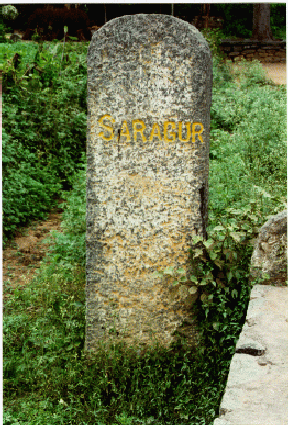
|
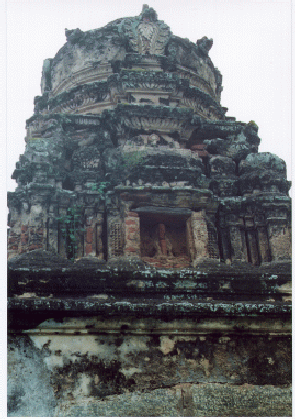 |
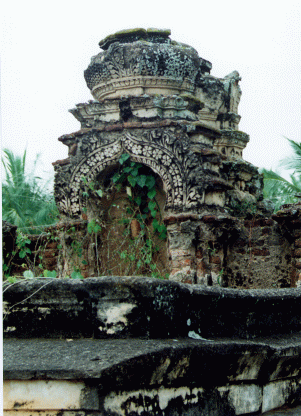
|
Fig.1. A distance marker at Sargur.
|
Fig.2 View of the main tower (gopuram) of the temple.
It is crumbling due to lack of any maintenance. |
Fig.3 View of the side gopuram. Notice the exquisite design as well as the overgrowth.
|
 |
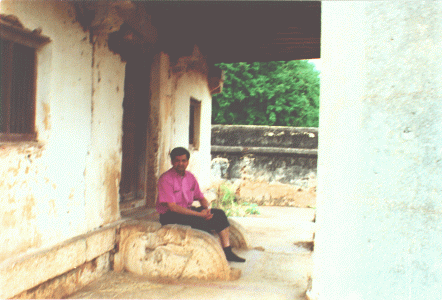 |
Fig.4. Temple steps.
| Fig.5. Yours truly at the locked temple entrance.
|

|

|
Fig.6. Outside View of temple.
|
Fig.7. The entrance to the abandoned temple.
|

|
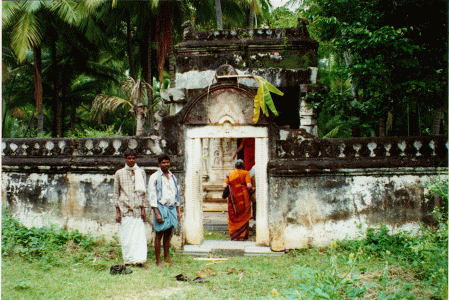
|
Fig.8.
In front of a hut similar to where my grandfather (N. Sama Iyengar)
was born. Sama Iyengar studied under street lights in the main road. He went on to college in Mysore and received a law degree. He eventually became the District Judge for Mysore district before Indian independence. The street has largely transformed from being a Hindu neighborhood. The chicken in the foreground belongs to one of the local families.
|
Fig.9. Another temple in coconut plantation. This temple is an active one. Mother can be seen inside temple.
|
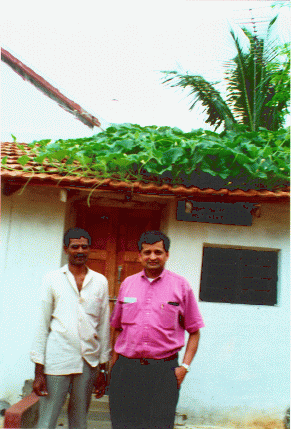
|
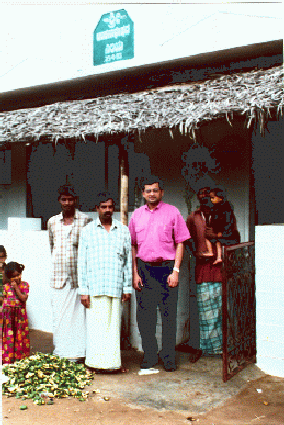 |

|
Fig. 10.
With Joseph Chikkaswamy, Post Master of Sargur,
in front of the Post Office.
He showed me pictures of his brother who is a Roman Catholic priest.
| Fig. 11.
With Mahadeva Setty and relatives in front of Anka Nilaya, named after
their father. I had known Anka Setty when I was about 7 or 8 years old since he used to come to visit my grandfather in Mysore.
Those are areca-nuts on the ground.
| Fig. 12.
Village Children.
Note the boy with homemade cricket bat at front.
|

|
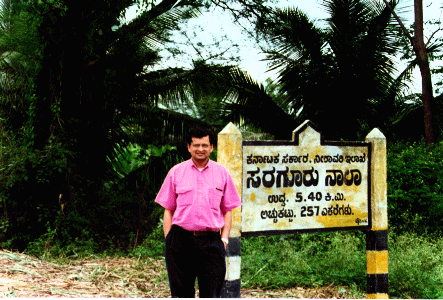
|
Fig. 13.
Crossing the Suvarnavathi channel. Since there is no bridge across it one has to wade through it to reach the coco-nut plantation.
| Fig. 14.
The sign says "Saraguru canal, a Government of Karnataka waterworks project." It is 5.4 Km long and irrigates 257 acres.
|